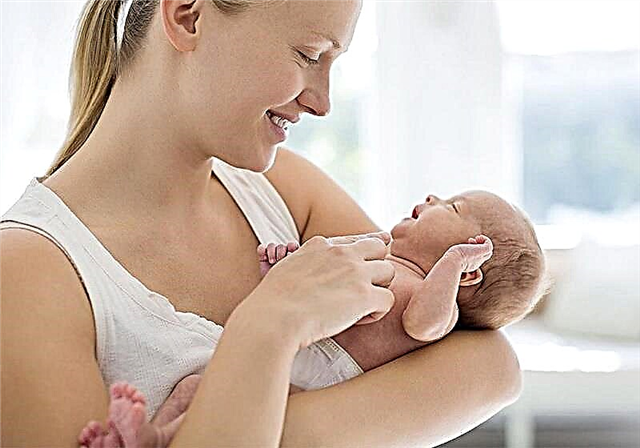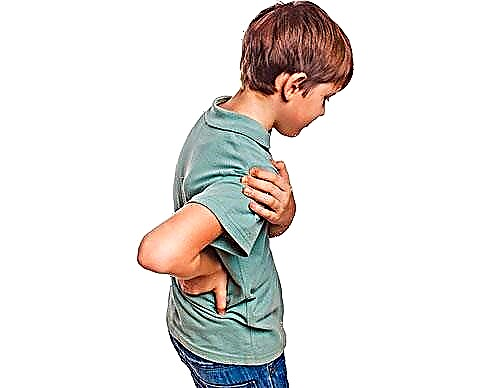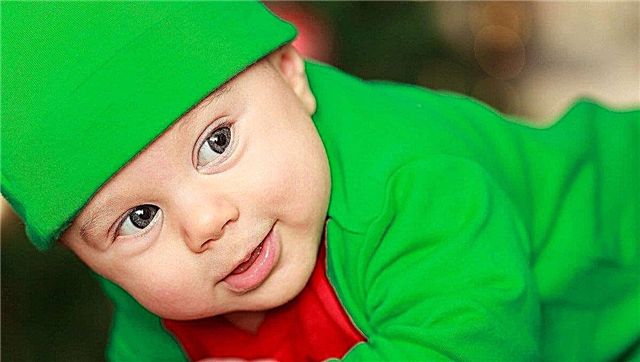Blood pressure is an extremely important factor. Knowing its indicators, one can judge not only the health of the heart and blood vessels, but also determine their performance, as well as find out the speed of blood flow. Blood pressure directly depends on the heart rate and the intensity of the resistance of the vascular walls. Parents need to know the values of blood pressure in a child, from birth to adolescence. This will help monitor vital signs and ensure the health of the child in the future.

Measuring blood pressure in a child
Normal blood pressure in a child
Blood pressure readings depend not only on age, gender, health and physical activity, but also on the time of day when the measurements were taken. In young children, the capillary network is much more extensive and more pronounced, the lumen of the blood vessels is wider, and their walls are more elastic. It is these factors that influence the fact that infants' blood pressure is much lower than that of school-age children, adolescents and adults. The blood pressure rate increases over time as the child grows.
To calculate normal blood pressure in children of different age groups, pediatricians use certain formulas. The rate of pressure in a newborn child is as follows: to calculate the upper pressure indicator in babies up to one year old, use the formula (2n + 76), where n is the number of months of the child's life. For children from 1 to 15 years old, use a different formula (2n + 90), where n is the number of full years.
To calculate the lower blood pressure in infants from birth to one year old, take from 2/3 to 1/2 of the maximum upper pressure. The lower indicator after 12 months and up to 15 years is calculated by the formula (n + 60), where n is the age (number of full years).
Note! If a child has a single increase or decrease in blood pressure, this is not a reason to diagnose hypotension or hypertension.
How much should a child's pulse be: up to a year, the pulse rate is 140-120 beats per minute, at 5-7 years old - 100-90, 8-10 years old - 85-80, 11-14 years old - 85-70 beats per minute.

Measurement with a tonometer
Why it differs from the pressure of adults
Blood pressure indicators in children are much lower than in adults. The reason is that the walls of blood vessels in a small child are still quite elastic and have wide gaps, and the capillary network itself is more branched. These age-related properties gradually change as the child grows, respectively, the rate of blood pressure rises. A deviation from the norm can provoke various diseases, so parents should understand what pressure in a child can be considered optimal.
Pressure indicators in newborns
In newborn babies, the elasticity of the vessels is increased, the capillary network has certain developmental features, it is for this reason that their blood pressure is lowered. From birth until one year, as the small organism grows, the pressure will gradually increase.
The pressure in newborns is normal: for a newly born baby, the normal BP is 60-96 / 40-50 mm Hg. At the age of one month, blood pressure readings rise to 80-112 / 40-74 mm Hg.
During the first twelve months of the baby's life, the vascular tone will increase, after a year, the blood pressure will be about 90/50 - 112/74 mm Hg.
Note! The exact blood pressure reading depends on the physical parameters (height and weight) of the baby. Parents should not worry if the blood pressure of their 2-3 month old baby is the same as that of some one year old babies. Each child has its own individual development schedule. In one infant, the indicators increase gradually, in another, it happens very quickly.
Pressure rate at the age of 10-12 years
The age of a child from 10 to 12 years old is transitional. During this period of life, accelerated growth and development of the body can be observed. It is this factor that affects the state of elasticity of the vessel walls. For this reason, ten-year-old or twelve-year-old children can often experience fluctuations in blood pressure, especially in girls, because they grow up faster than boys. What pressure should a child have at 10 years old: the blood pressure rate for children of this age is 110-126 / 70-82 mm Hg.
Additional Information. The age of 11-12 is the borderline between childhood and adolescence. Due to acceleration, some children begin to grow vigorously. The increase in bones in length with the slow development of internal organs creates an additional load on the vessels. Moderate exercise can help strengthen the heart muscle and stabilize the nervous system.

Child at the doctor's appointment
Signs of adolescence
From the age of seven (for some, eight years), a stable increase in normal upper blood pressure begins. Each month, the value is added by one unit for girls and two for boys. By the age of ten, the indicators equalize, then the rise is observed only in boys.
From about twelve, thirteen years old, blood pressure indicators are unstable, there are frequent jumps. They are often accompanied by some unpleasant symptoms, which in most cases go away on their own. This continues until puberty. Sixteen-year-old (seventeen-year-old) girls and boys have almost the same performance as adults.
What pressure should a child have from 13 to 16 years old? BP norms in adolescents are:
- At 13-14 years old - 110-136 / 70-86 mm Hg.
- At 15 years old - 110-120 / 75-80 mm Hg;
- At 15-16 years old - 115-120 / 70-80 mm Hg.
Important! In adolescence, boys and girls have many moments that provoke a stressful situation. The influence is exerted by changes in the hormonal background, lack of physical activity, various psychological factors. All of the above reasons affect the decrease or increase in blood pressure.
Fluctuations in blood pressure in girls
From the age of 10 in girls, hormonal changes in the body begin, which is a priori accompanied by jumps in both blood pressure indicators. It is very important to consider that when taking pressure measurements, in addition to age, it is also necessary to take into account height and physique.

Girl at the doctor's appointment
What affects blood pressure at 10-12 years old
An increase or decrease in pressure does not always indicate disturbances in the work of the child's cardiovascular system. Sometimes it "jumps" because of hormonal changes in the child's body, which happen precisely at the age of 10-12, or because of excessive fatigue.
Important! If the indicators are violated periodically, and the increase in blood pressure is accompanied by headaches and tinnitus, you should consult a doctor. This may indicate hypertension.
Child's height and weight
At the age of 10-12 years, the readings of the tonometer are directly influenced by height and weight. In thin and tall children, the data are lower than their peers, who are larger and smaller. It was also found that weight loss in obese children is always accompanied by a decrease in blood pressure. Conversely, the more a child gains body weight, the more often he experiences symptoms of hypertension. Height will also affect the level of pressure: the taller the child, the higher the pressure.

Tonometer
What does the increase in pressure say?
The causes of high blood pressure in children are not yet fully understood. Scientists believe that hypertension can manifest itself in primary or secondary forms.
Risk factors:
- Excess weight;
- Increased physical activity;
- Frequent emotional stress, stress;
- Chronic fatigue, lack of sleep;
- Taking medications that increase blood pressure;
- Smoking and drinking alcohol.
In the secondary type, hypertension is a symptom. The main disease can be:
- Diseases of the kidneys and liver;
- Endocrine system diseases;
- Congenital heart disease;
- Neurotic disorders.
A specific cause of high blood pressure in adolescence is hormonal changes in the body.
Parents should know that it is very important to adjust the child's day regimen, especially the alternation of loads, as well as to establish normal sleep (8-9 hours a day). It is equally important to make sure that the child walks in the fresh air for 2-3 hours a day. It is also necessary to strictly control the child's consumption of sweet, flour, fatty and salty foods.



